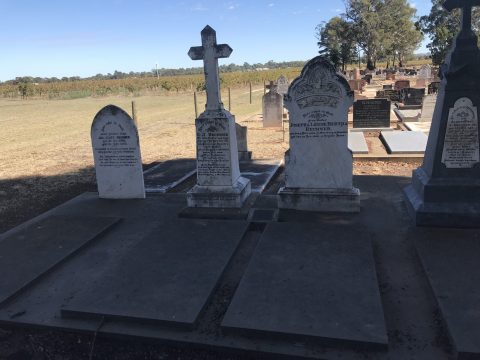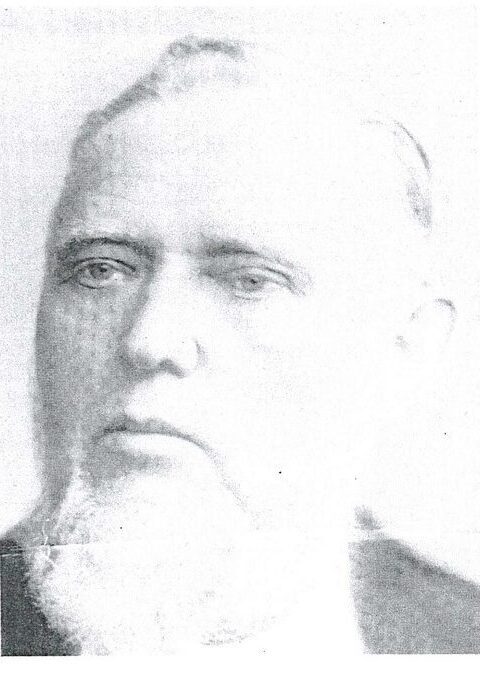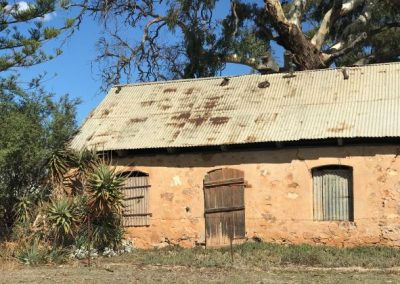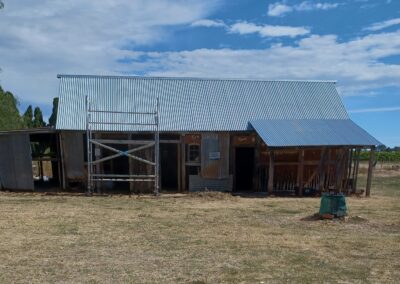In 1848, at the age of 18, Gustav Julius Rechner said goodbye to his family in Silesia, Germany, and emigrated to South Australia. He lived most of his life in the small village of Light Pass in the Barossa Valley. When he died in 1900, over 1,000 people attended his funeral. A well-loved man, he impacted lives and communities, both close to home and throughout the state. Who was the man that the cottage is named after?
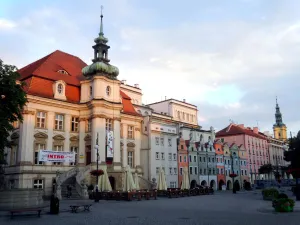 GJ’s home town of Liegnitz, Silesia
GJ’s home town of Liegnitz, Silesia
Early Years: Gustav Julius Rechner was born in 1830 at Liegnitz, Silesia (then part of Germany, now Poland). He was a well-educated young man, confident, interested in many things, and extremely musical and devout. His family were warm, welcoming and hospitable and found much enjoyment in life. They valued faith, education, service to others and hard work, and GJ carried these values throughout his life. GJ was a prolific writer, and his diaries and letters give a wealth of information about his early life.
Freedom of worship was very important to the family. Many Germans were dissatisfied with the curtailing of religious freedom which accompanied the formation of the Lutheran church as the new state church of Germany. They were assisted in immigrating to Australia by the English businessman and banker, George Fife Angus, who played an important part in the formation of the South Australian colony. He saw the value of their strong work ethic, skilled craftsmanship, and principled beliefs, and felt German settlers would be ideal for the new state of South Australia.
Young and adventurous, GJ decided to emigrate. In 1848, he said goodbye to his family, and set out for the colony of South Australia.
Making his new life
On arrival in South Australia, GJ first found employment in the tallow melting works near Bethany, and then tried his hand at farming. With a friend, he set up a farm at Bethany, in the Adelaide hills, but the venture was abandoned after 18 months. He then acted as secretary for George Fife Angus for several months, until a position came up as the teacher for the Lutheran School at Light Pass, a small village in the Barossa Valley.
For the mainly Lutheran German immigrants, faith and education went hand in hand. As soon as they could, they established a church and a school wherever they settled. This strong focus on education is still important in the Lutheran church today. GJ began as the teacher in 1850 and continued in this role for ten years. Ruth Grope, in Light Pass Revisited 1986, states the terms of his contract. “He was to have the benefit of 3 ½ acres of cropped land, a free residence and free chopped firewood… Also 30/- weekly plus a bushel of wheat from every family head in congregation and school.”
Life as a schoolteacher was incredibly busy. GJ taught up to 100 children and had to produce all of the teaching materials himself. In the evenings he prepared classes, studied English, and then taught English to the adult settlers. He was also the cantor for the church, and arranged music for special occasions, weddings and baptisms. The musical scores had to be handwritten for all the choir members.
Becoming a pastor
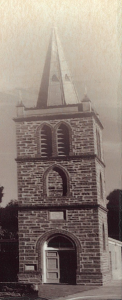 Zur Engen Forte (Strait Gate) Bell Tower.
Zur Engen Forte (Strait Gate) Bell Tower.
In 1858, a split occurred in the Immanuel church congregation over matters of doctrine. 25 families broke away and decided to form their own church – the Strait Gate Lutheran Church. That is why in Light Pass you can see two Lutheran churches just across the road from each other.
The newly-formed Strait Gate congregation decided to call GJ Rechner as their pastor. They appreciated his strong and unwavering faith, his care for people, his enthusiasm, great organizational and leadership abilities, and his vision. There was some dissension in the wider church as GJ was not ordained, but this was overcome, and he was installed in 1860 as pastor. He held this position for 40 years, until his death on August 21st, 1900. About 1,000 people attended his funeral.
It was said of him “He was a wall one could lean against; he found help when everybody else was helpless. He was a heroic example of faithfulness to duty; he never lost faith and courage in the most difficult situations“.
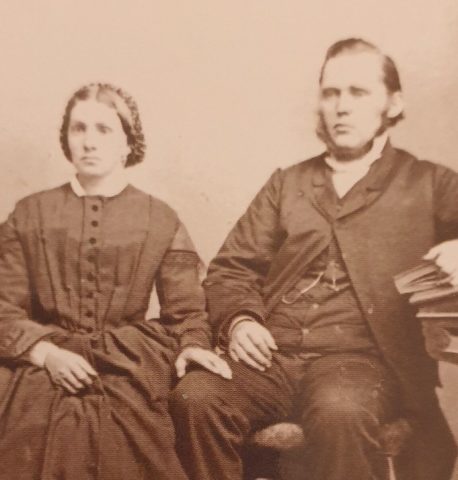 GJ and Bertha
GJ and Bertha
GJ’s sweetheart, Bertha.
Before he immigrated, GJ had met and formed a close friendship with a young girl named Bertha Bergmann. She, however, was a Catholic, and so GJ did not believe there was a future for them together. Imagine his surprise when, in 1850, two years after he immigrated, he was taken to Adelaide by a friend. There was Bertha, getting off the boat! She had converted to Lutheranism and come to join him. They were married soon after. They shared a mutual faith, vision and love and this was a strong foundation for their partnership of 50 years. (Interested in their romance? You can read more about their courtship and marriage here.)
We don’t know very much about Bertha’s life as a busy Pastor’s wife. She had 13 children, but six died at birth or soon after. However, looking after 7 children, a house and garden, as well as the many visitors that came to stay at the house, must have been exhausting. In the photo she certainly looks careworn, and it’s not surprising. It would be wonderful to know more of her – perhaps someone has reminiscences written by her children or grandchildren.
A rich life:
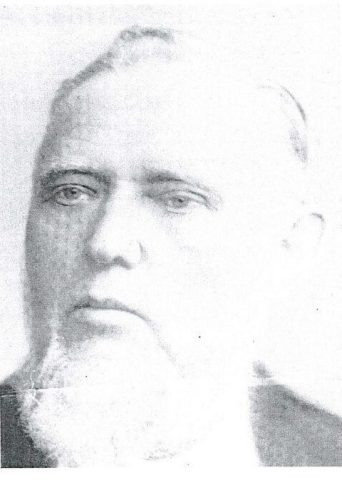
As well as caring for several congregations, GJ was on many committees, both in the church and the local community. He maintained his passion for education and was instrumental in setting up new schools. He was involved in local affairs and assisted many in the community with all sorts of things, from deep matters of faith to deciphering government forms.
He was deeply concerned for the Indigenous peoples, distressed that they were losing their land and way of life. He helped establish missions and went to visit them whenever he could. For many years he served as the church’s President of Missions. Although today missions are often considered a forcing of colonizer’s beliefs on Indigenous people, GJ undertook it with a real heart for the people and their welfare and worked to preserve their language and culture.
In 1874 he became President of the newly formed Evangelical Lutheran Immanuel Synod. Throughout his life he continued his many interests, including music and gardening. He effectively ran a smallholding around his manse, with cows, pigs, poultry, fruit trees, vegetables and hay. He always kept his love for people, and my favourite recollection of GJ is by his grandson, JJ Stolz, who remembers him at home at the manse, joining in with their many guests in the evenings to laugh and talk, sing songs, play with the children, and enjoy the rich life he had been blessed with.
GJ Rechner died in 1900 and is buried in Light Pass cemetery.
